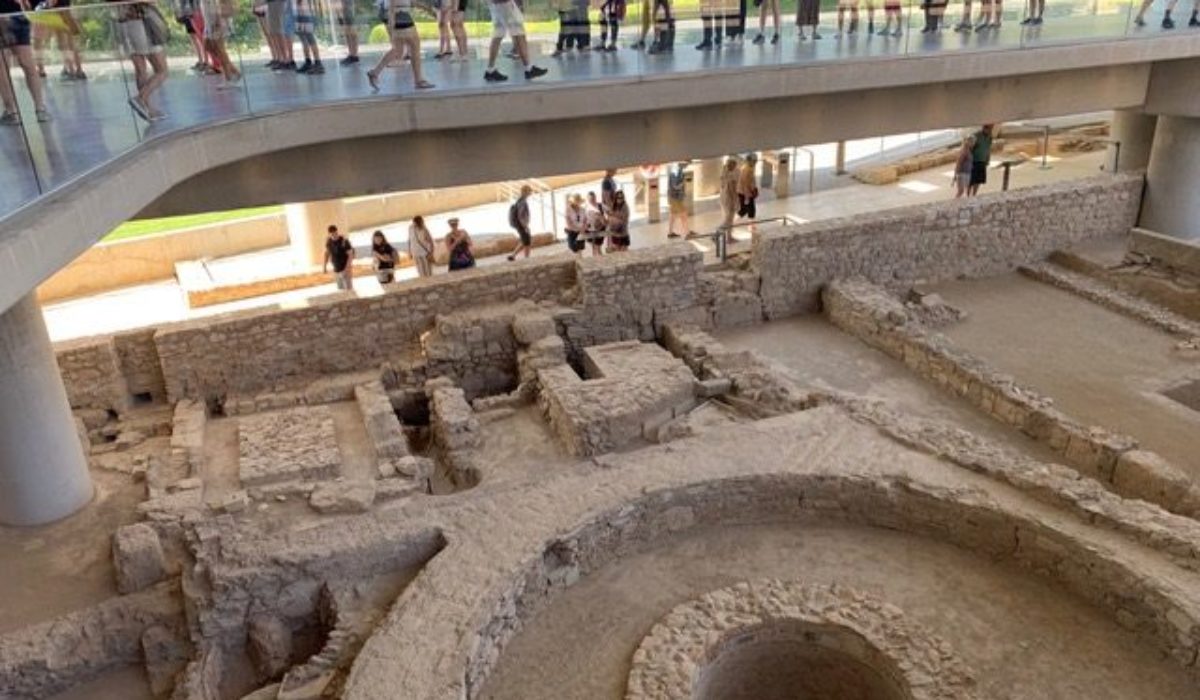by Judy Bereza, Guest Blogger
There is a wondrous museum in Athens, Greece. Located at the base of the Acropolis, it is sited so that the Parthenon, to which the museum is dedicated, is always in full view. Simply put, you really shouldn’t do one without the other; they are both architectural marvels of their time.
A bit of history. In 1687, during the occupation of Greece by the Ottoman Empire, the Venetians attacked Athens in an attempt to stop the progression of the Turks into Europe. The Turks foolishly stored their gunpowder in the Parthenon, and a lucky shot by the Venetians partially destroyed it. In 1816, Lord Elgin of England negotiated the purchase of sculptures from the destroyed frieze, and since then they have resided in the British Museum.
Parthenon Sculptures
The trustees of the museum have long claimed that the Parthenon Sculptures would be irreparably harmed by returning them to the primitive conditions in the Acropolis Museum. Thatwas a persuasive argument until 10 years ago, when the new, magnificent Museum of the Acropolis opened its doors. It houses in a beautiful setting priceless treasures of ancient Greece.
During the excavation for the museum, archeologists discovered the remains of an Athenian urban settlement, dating from the 5th to the 9th century B.C. This changed things. A new design was needed to protect and display these ruins. The ingenious new design floats above the archeological site where excavations are still ongoing.
The visitors can look through glass floors at the ancient neighborhood below. In the future, this area will also be open to visitors. The museum itself is a contemporary marvel. It is highly regarded in the museum world, and has received many awards. The first year it was opened, it was free to all Athenians,and was an immense source of national pride.
The top floor of the museum is the most awe inspiring. A fullscale model with the exact floor plan of the Parthenon is displayed, with all the recovered artifacts placed on the model exactly where they would have been on the original structure. You can look at the model, and then turn and look through massive walls of glass at the actual temple 900 feet above you.
The glaring absence of the missing sculptures is is apparent in how they are displayed. The original honey colored pieces are in their correct placement and look ancient, and the missing elements are rendered in white plaster. Fully half of the sculptures are mounted not in Athens, but in the British Museum.
There is an interesting political bent to the controversy
 Judy Bereza is a retired interior designer/kitchen expert, constant walker and “Nana” to five adorable grand children. With friends she has hiked in Wales, Cornwall, Switzerland, Smokey Mountain National Park, Ireland and California.
Judy Bereza is a retired interior designer/kitchen expert, constant walker and “Nana” to five adorable grand children. With friends she has hiked in Wales, Cornwall, Switzerland, Smokey Mountain National Park, Ireland and California.
Occasionally she veers off the trail to explore a different kind of travel adventure that includes her husband..













Comments
1 CommentMargaret Idema
Jan 7, 2020Hi Judy, I traveled in Greece way back in my college days, too long to remember. Your article about the museum is inspiring me to go back to see it. Will add Greece to my ever-growing list of places to visit before I die! I just need to live a very long time!